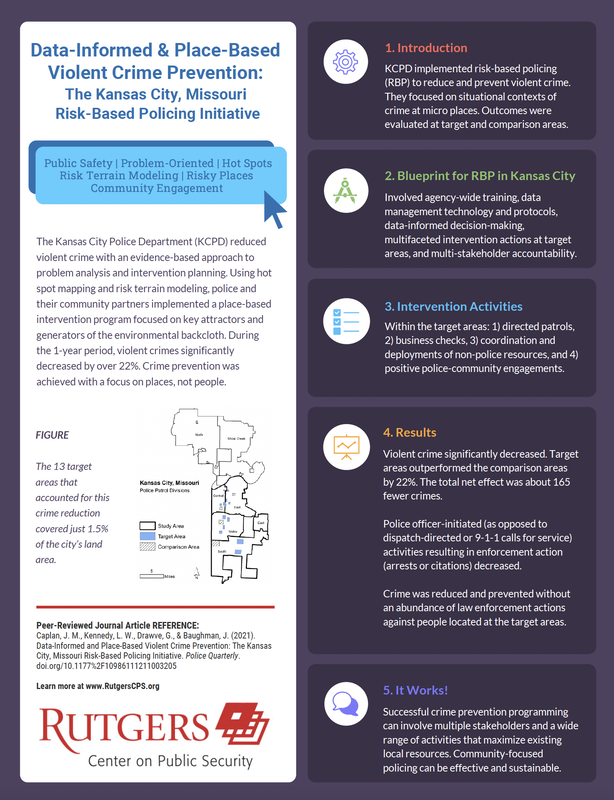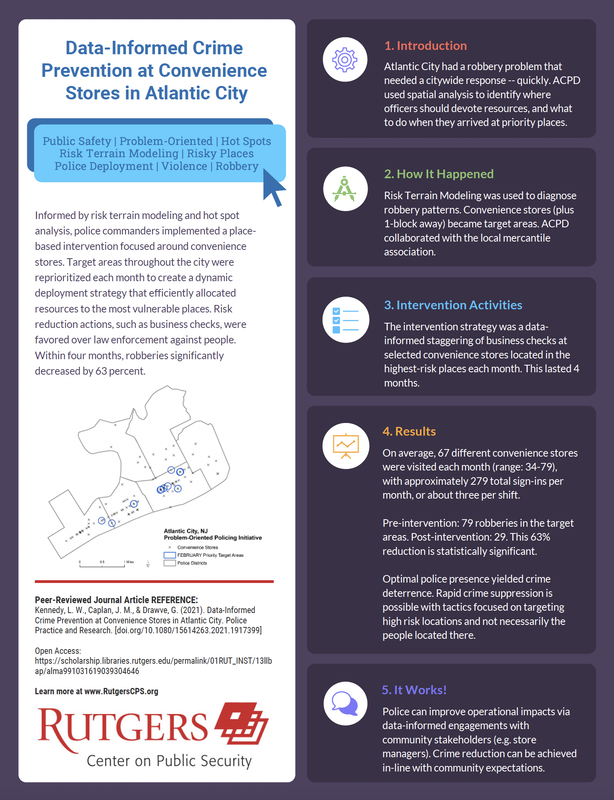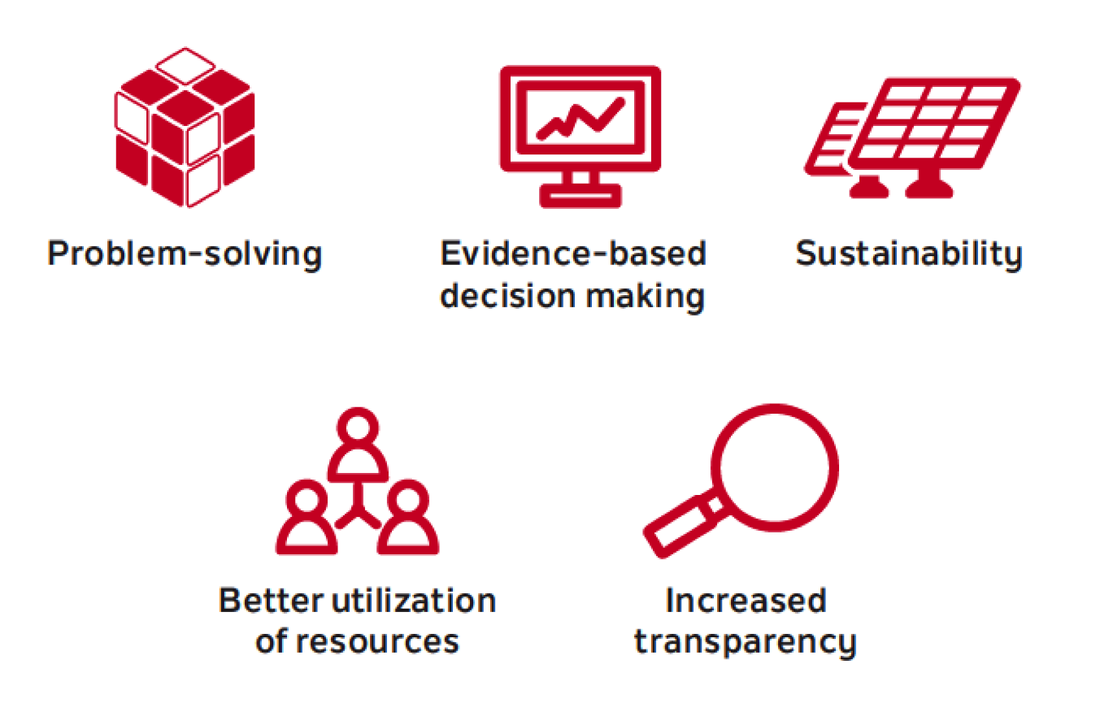Benefits |
Risk Terrain Modeling meets many needs: Reliable spatial data analysis; evidence-based decision support for intervention, prevention, and problem-solving activities; efficient utilizations and allocations of resources; transparency in responsive actions; community engagement.
|
Precise Forecasting. Efficient Deployments. Better Outcomes.
|
Evidence-Based Crime PreventionPolicing with RTM has been tested in small and large cities throughout the United States. Research funded by the U.S. Department of Justice resulted in large crime reductions where RTM was used to direct police patrols and other non law enforcement strategies. Robbery decreased by 42%, gun violence reduced by 35%, and motor vehicle theft reduced by 33%, to cite a few examples.
As seen on the National Geographic Channel, the Atlantic City Police Department (ACPD) fully implemented Risk-Based Policing with RTMDx citywide in 2017. In just 4 months, robbery decreased over 50%. Kansas City Missouri PD focused more broadly on violent crimes for a full year and had great success. The Newark Public Safety Collaborative takes these risk-based policing initiatives to a whole new level with data-informed community engagement. |
TransparentRTM has transparency and integrity because it's based on rigorous scientific research and peer-reviewed publications. See the Evidence
|
By finding hidden spatial patterns in big data with amazing accuracy. |
Risk Reduction
With risk terrain maps and report bulletins, problem solvers know the "where and why' of issues, so they can plan effectively about what to do when they get there. Learn More
|
Focus on Places
RTM adds value to spatial data with civilly just analytics in a socially connected world. Legal scholars [1] [2] have explained that spatial intelligence from Risk Terrain Modeling offers police an exceptional opportunity to quantify places in a way that respects constitutional protections for people located there. This, they said, is because RTM enables a concerted effort to not only focus on individual offenders present in locations at any given moment in time, but to understand and address the mechanisms that enable hot spots to emerge and persist over time. RTM offers insights about places that repeatedly attract illegal behavior in order to mitigate their appeal. This both enhances public safety and safeguards citizens' rights.
RTM empowers us to make informed decisions to solve problems and to get the credit we deserve for success. |
Give Analysts an Edge
Risk Terrain Modeling has been peer-reviewed and scientifically proven to identify vulnerable locations, even if crime never occurred there before. Time and again, RTM accurately forecasts risky places as small as half-a-block.
RTM is reliable, precise and accurate. It has a demonstrated ability to be more accurate than hot spot mapping and other existing practices, giving analysts actionable intel as they carry out their jobs. |
As analysts work with police patrols to reduces crime counts, they may also be improving clearance rates for the fewer crimes that do happen [Reference]. A focus on risky places has also been shown to improve police-community relationships, which can increase witness participation and also improve clearance rates.
Local Economics
Focusing on risky places to prevent crime has exponential returns on investment in terms of local CJ system & healthcare costs. Just 6 fewer violent crimes could save over $200,000 and free up more than 9 hours of a police officer's patrol time [Reference A; Reference B]. Reducing violent crime with a focus on places can also improve the physical health of people living in these communities [Reference C; Reference D]. Crime prevention with RTM makes every dollar spent on public safety more effective.
|
|
Data-Informed Community Engagement
Coordinated responses with police and community organizations can play a large role in violence reduction and prevention, and make cities safer [More evidence].
|
Risk-Based Policing
Risk-based policing is the mindset and operational practice of reducing and managing crime risks in order to prevent crime. It emphasizes:
|



